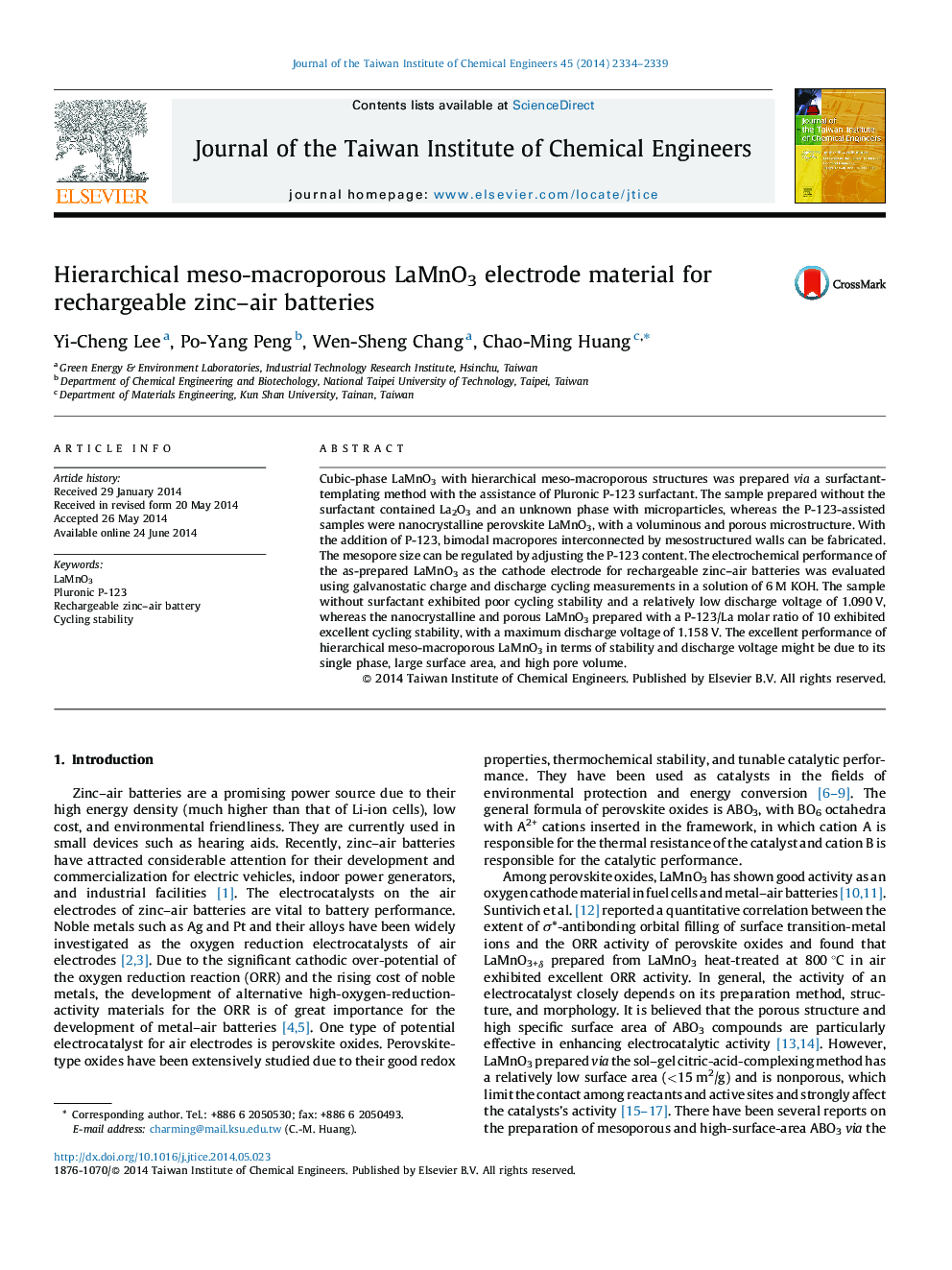| Article ID | Journal | Published Year | Pages | File Type |
|---|---|---|---|---|
| 691495 | Journal of the Taiwan Institute of Chemical Engineers | 2014 | 6 Pages |
•Meso-macroporous LaMnO3 was prepared with the assistance of Pluronic P-123 surfactant.•Electrochemical performance of P-123-assisted samples is superior to that of without P123 sample.•Amount of P123 markedly influenced the activity of the P-123-assisted sample.•Phase, surface area, and pore volume are responsible for activity of meso-macroporous LaMnO3.
Cubic-phase LaMnO3 with hierarchical meso-macroporous structures was prepared via a surfactant-templating method with the assistance of Pluronic P-123 surfactant. The sample prepared without the surfactant contained La2O3 and an unknown phase with microparticles, whereas the P-123-assisted samples were nanocrystalline perovskite LaMnO3, with a voluminous and porous microstructure. With the addition of P-123, bimodal macropores interconnected by mesostructured walls can be fabricated. The mesopore size can be regulated by adjusting the P-123 content. The electrochemical performance of the as-prepared LaMnO3 as the cathode electrode for rechargeable zinc–air batteries was evaluated using galvanostatic charge and discharge cycling measurements in a solution of 6 M KOH. The sample without surfactant exhibited poor cycling stability and a relatively low discharge voltage of 1.090 V, whereas the nanocrystalline and porous LaMnO3 prepared with a P-123/La molar ratio of 10 exhibited excellent cycling stability, with a maximum discharge voltage of 1.158 V. The excellent performance of hierarchical meso-macroporous LaMnO3 in terms of stability and discharge voltage might be due to its single phase, large surface area, and high pore volume.
